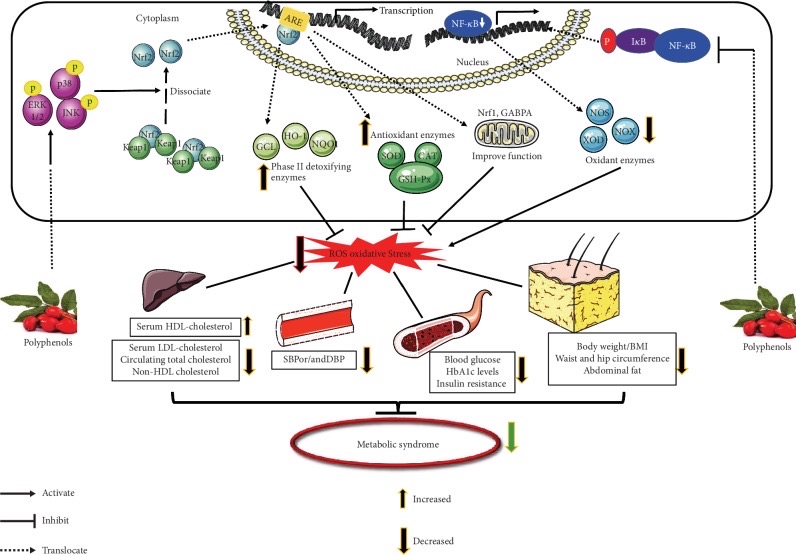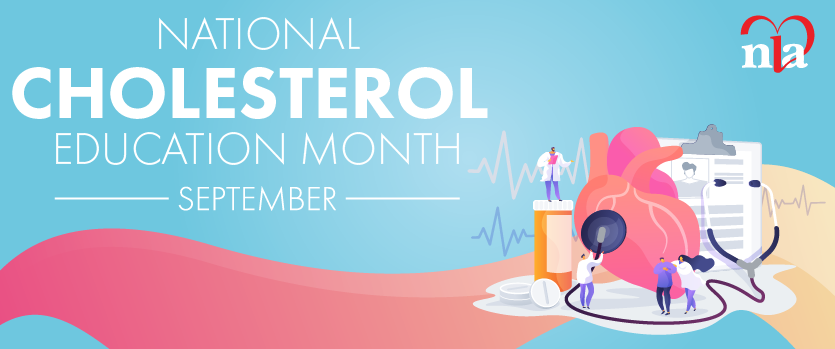Cardiometabolic Disease and Polyphenols
Cardiometabolic disease is the concurrence of several disease states, including impaired glucose tolerance, hypertension, dyslipidemia, and visceral adiposity. These risk factors predispose patients to chronic diseases such as type 2 diabetes mellitus, stroke and heart disease. Lifestyle modification has been used effectively to reduce several of these risk factors and even delay or prevent the onset of cardiometabolic disease. One effective dietary modification has been a daily increase in plant-based foods, partly due to their polyphenol content.
Polyphenols are chemical compounds found in plants which contain phenol rings, which are comprised of six carbon atoms arranged in a hexagon, with alternating single and double bonds. In plants, they yield a defensive effect, protecting them from stresses such as UV rays, high heat and drought. Polyphenols are specialized metabolites, and to date, there are over ten thousand identified natural polyphenols. They can be classified into two groups, ‘flavonoids’ and ‘non-flavonoids' based on variations in their chemical structures.1 While they are not considered essential nutrients for human life, they do have a positive influence on our health and can help reduce the risk of disease development and advancement. Specifically, polyphenols have been proven to reduce inflammation and oxidative inflammatory effects.2
Diets which Promote High Polyphenol Intake
Diets high in polyphenols have been used for their protective effects against cardiometabolic disease. Even without calorie restriction or tracking, an increase in the intake of polyphenols and polyphenol containing foods has been shown to lower waist circumference, insulin resistance, lipid levels and help regulate blood pressure. Two well studied and effective diets that naturally increase polyphenols are the Mediterranean diet and the DASH diet. Notably, these two diets are plant based and encourage intake of multiple daily servings of fruits and vegetables- up to 10 servings per day in some cases. While these diets do allow for some non-plant-based foods, such as fish and dairy, the bulk of the diets are fruits, vegetables, and whole grains.
How Do Polyphenols Affect Cardiometabolic Disease
There have been many research initiatives aimed at recognizing the impact polyphenols have on type 2 diabetes, obesity, hypertension and dyslipidemia. In 2018, Cao H., et al. led clinical trials where participants were administered flavonoid supplements, (biomolecules in absence of the fruit or vegetable). This led to a significant improvement in insulin regulation in those with type 2 diabetes.3 In terms of their effect on obesity, Dr K.J. Astell published a 2013 study where diets were supplemented with gallic acid (a non-flavonoid), waist to hip ratio decreased by 3%, compared to 1% in the control group. Fat accumulation was markedly decreased compared to the control group.4 In a 2015 study, Rostami A., et al. found that daily intake of 25 g of dark chocolate, containing flavanols, resulted in a significant decrease in systolic and diastolic blood pressure (about 5.93 mmHG and 6.4 mmHG, respectively) after about 8 weeks.5 Erlund I., et al. led trials in 2008 that compared berry eating groups (flavn-3-ols, flavanols and flavones) to a control group found high density lipoprotein-cholesterol levels significantly increased in the experimental group.6 A 2016 placebo controlled clinical trial indicated that green tea extract supplementation for 1 year was associated with decreased circulating total cholesterol, low density lipoprotein-cholesterol and non-high density lipoprotein cholesterol when compared to control group.7
The underlying mechanisms for how and why polyphenols exert these cardioprotective effects is not yet completely understood. It has been suggested that this occurs as a result of their antioxidative and anti-inflammatory properties.8 These compounds have the capacity to reduce high levels of reactive oxygen species (ROS), highly unstable molecules that can cause damage to DNA, RNA, and cellular proteins. Other polyphenols increase cellular antioxidant activity in intestinal hepG2 cells (non-tumorigenic liver cancer cells used to study metabolism and toxicity).9 Additionally, they are known to disrupt the oxidative signal pathways in various ways. The table below summarizes the various biochemical pathways polyphenols may use in ameliorating inflammation and oxidation within cells.10 Finally, polyphenols have been shown to inhibit oxidative enzymes and even to restore mitochondrial function.11

Practically Increase Intake of Polyphenols
The utility of polyphenol supplements as a means to combat cardiometabolic disease includes some important considerations.12 First, while bio-accessibility is high, the bioavailability of polyphenols derived from plant food is relatively low. This means that humans can only utilize a small percentage of the polyphenols ingested from plant food. Also, dietary phenols, that is phenols absorbed through eaten foods, are part of a polyphenol mixture, and they likely work in concert with one another. Deriving a single polyphenol for use as a medication or supplement may not be comparable. Additionally, extraction from plants may degrade the polyphenol, making it difficult to make into a pill form. Lastly, the critical dose and toxicity levels for these biochemicals must also be considered. Because polyphenols are foreign chemical structures to the body with no nutritional value, they activate the body's defense system in small doses - the antioxidative and anti-inflammatory response noted above. However, in accordance with the concept of hormesis, in high doses polyphenols can trigger oxidative effects and become toxic. A good example of this is green tea polyphenols - at doses of 0.01% they show hepato-protective effects, but at doses of 1.0% they have been shown to cause nephrotoxicity in mice.13
While we need more research and clinical trials to be done before recommending them for use as supplements to help treat cardiometabolic disease, recommending a larger intake of polyphenols through dietary sources is widely accepted. This includes more fruits and vegetables, olive oil and nuts - even dark chocolate - in the diet, which can naturally boost polyphenol intake without risk of toxicity. While these recommendations are not specific or as direct as taking a supplement would be, they are recognized as a safe and effective dietary method to reduce inflammation and cellular oxidation. Thus, plant-based diets, with elevated polyphenol intake, may be effectively incorporated into a treatment plan for patients diagnosed with or at risk for cardiometabolic disease.
References
- Del Rio D., Rodriguez-Mateos A., Spencer J. P. E., Tognolini M., Borges G., Crozier A. Dietary (poly)phenolics in human health: structures, bioavailability, and evidence of protective effects against chronic diseases. Antioxidants & Redox Signaling. 2013;18(14):1818–1892. doi: 10.1089/ars.2012.4581.
- Liu K, Luo M, Wei S. The Bioprotective Effects of Polyphenols on Metabolic Syndrome against Oxidative Stress: Evidences and Perspectives. Oxid Med Cell Longev. 2019 Nov 30;2019:6713194. doi: 10.1155/2019/6713194. PMID: 31885810; PMCID: PMC6914975.
- Cao H., Ou J., Chen L., et al. Dietary polyphenols and type 2 diabetes: human study and clinical trial. Critical Reviews in Food Science and Nutrition. 2018;59:1–9. doi: 10.1080/10408398.2018.1492900.
- Astell K. J., Mathai M. L., McAinch A. J., Stathis C. G., Su X. Q. A pilot study investigating the effect of Caralluma fimbriata extract on the risk factors of metabolic syndrome in overweight and obese subjects: a randomised controlled clinical trial. Complementary Therapies in Medicine. 2013;21(3):180–189. doi: 10.1016/j.ctim.2013.01.004.
- Rostami A., Khalili M., Haghighat N., et al. High-cocoa polyphenol-rich chocolate improves blood pressure in patients with diabetes and hypertension. ARYA Atherosclerosis. 2015;11(1):21–29. -
- Erlund I., Koli R., Alfthan G., et al. Favorable effects of berry consumption on platelet function, blood pressure, and HDL cholesterol. The American Journal of Clinical Nutrition. 2008;87(2):323–331. doi: 10.1093/ajcn/87.2.323
- Samavat H., Newman A. R., Wang R., Yuan J. M., Wu A. H., Kurzer M. S. Effects of green tea catechin extract on serum lipids in postmenopausal women: a randomized, placebo-controlled clinical trial. The American Journal of Clinical Nutrition. 2016;104(6):1671–1682. doi: 10.3945/ajcn.116.137075.
- Heim K. E., Tagliaferro A. R., Bobilya D. J. Flavonoid antioxidants: chemistry, metabolism and structure-activity relationships. The Journal of Nutritional Biochemistry. 2002;13(10):572–584. doi: 10.1016/S0955-2863(02)00208-5.
- Sun Y., Tao W., Huang H., Ye X., Sun P. Flavonoids, phenolic acids, carotenoids and antioxidant activity of fresh eating citrus fruits, using the coupled in vitro digestion and human intestinal HepG2 cells model. Food Chemistry. 2019;279:321–327. doi: 10.1016/j.foodchem.2018.12.019.
- Liu K, Luo M, Wei S. The Bioprotective Effects of Polyphenols on Metabolic Syndrome against Oxidative Stress: Evidences and Perspectives. Oxid Med Cell Longev. 2019 Nov 30;2019:6713194. doi: 10.1155/2019/6713194. PMID: 31885810; PMCID: PMC6914975.
- Rowley T. J., Bitner B. F., Ray J. D., et al. Monomeric cocoa catechins enhance β-cell function by increasing mitochondrial respiration. The Journal of Nutritional Biochemistry. 2017;49:30–41. doi: 10.1016/j.jnutbio.2017.07.015.
- Chiva-Blanch G., Badimon L. Effects of polyphenol intake on metabolic syndrome: current evidences from human trials. Oxidative Medicine and Cellular Longevity. 2017;2017:18. doi: 10.1155/2017/5812401.5812401
- Murakami A. Dose-dependent functionality and toxicity of green tea polyphenols in experimental rodents. Arch Biochem Biophys. 2014 Sep 1;557:3-10. doi: 10.1016/j.abb.2014.04.018. Epub 2014 May 9. PMID: 24814373.
Disclosure:
Ms. Miller has no financial relationships to disclose.
Article By:
Northwell Health
Great Neck, NY





.jpg)
.png)










